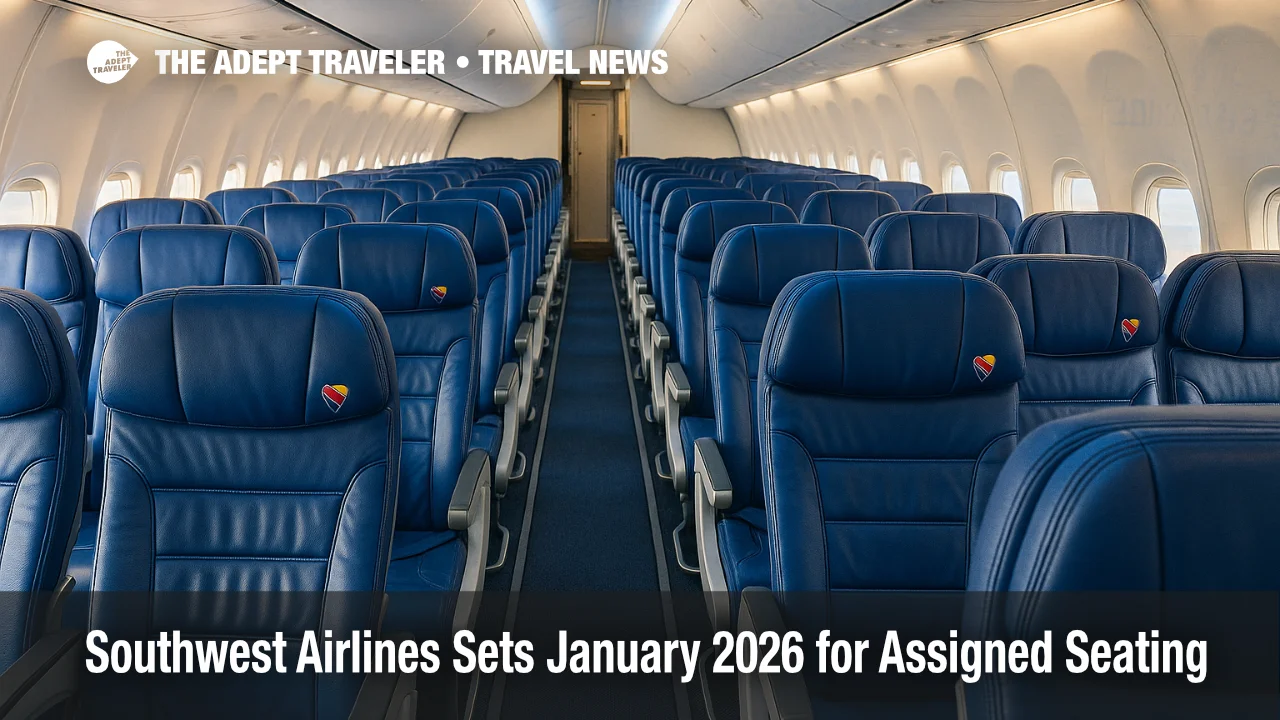Southwest Airlines Sets January 2026 Launch for Assigned Seating

Southwest Airlines will end its signature open-seating policy on January 27, 2026, replacing it with assigned seats and an eight-group boarding process. Travelers booking flights on or after July 29, 2025, will be able to choose seats- including new extra-legroom options-bringing the carrier in line with most U.S. competitors while promising "more choice and greater control," according to the airline.
Key Points
- Why it matters: Ends Southwest's open-seating tradition dating to 1971.
- Seat assignments open July 29, 2025, for 2026 departures.
- Eight boarding groups replace the familiar A, B, C queues.
- Groups 1-2 cover extra-legroom and top-tier fares; Groups 3-8 span choice and basic seats.
- Rapid Rewards credit-card holders board no later than Group 5.
Snapshot
Southwest's overhaul introduces three seat categories-Extra Legroom, Choice, and Basic-mirroring legacy carriers' cabin tiers. Customers willing to pay more can lock in forward-cabin or bulkhead seats, while budget travelers receive assignments during booking or check-in. The new boarding flow still lines passengers up numerically, but within eight clearly labeled groups that span the cabin from front to rear.
Background
Founded on an egalitarian open-seating model, Southwest long used the A, B, C boarding dance to keep turn-times short and fares low. Over the past decade, however, travelers have pressed for guaranteed seating-especially families and business flyers accustomed to reserved spots elsewhere. After small-scale trials in 2023-24, the Dallas-based carrier accelerated development of a tech platform capable of handling seat maps across its all-Boeing 737 fleet, paving the way for today's rollout.
Latest Developments
A swift timeline Southwest will load seat maps into its reservation system on July 29, 2025, covering flights that depart January 27, 2026, and beyond. Customers booking before that window will still follow open seating.
Extra Legroom debuts
A dedicated block of rows-likely bulkhead and exit-row seats-becomes the airline's first true "premium" option. These seats fall into Boarding Groups 1-2, along with Business Select and A-List Preferred travelers.
Eight-group boarding
The traditional 1-60 numbering remains, but letters disappear. Groups 3-5 encompass Choice seats (forward and mid-cabin), while Groups 6-8 serve Basic seats toward the rear. Rapid Rewards credit-card holders receive an automatic boost to Group 5 or better, easing concerns over middle-seat assignments.
Technology upgrades
Southwest's app and website will display seat maps during booking, allowing households to sit together without the airport scramble. Gate displays and boarding announcements will adopt new group labels to smooth the transition.
Analysis
For travelers, the shift swaps spontaneity for certainty. Families gain peace of mind, elite flyers secure forward cabin real estate, and Southwest opens a lucrative revenue stream similar to competitors' preferred-seat fees. The challenge lies in protecting the brand's "friendly and fair" reputation while monetizing seats once handed out first-come, first-served. Operationally, the carrier must keep 25-minute turns intact despite added cabin signaling. If boarding remains efficient, travelers may accept the modest upsell as the price of predictability.
Final Thoughts
Southwest's assigned-seating era begins in less than eighteen months, giving customers ample time to adjust boarding habits and budget for premium spots. Bookings made after July 29 should prompt a seat-selection check to ensure families and friends stay together when the airline's open-seating chapter officially closes on January 27, 2026-cementing the new norm of Southwest Airlines assigned seating.
